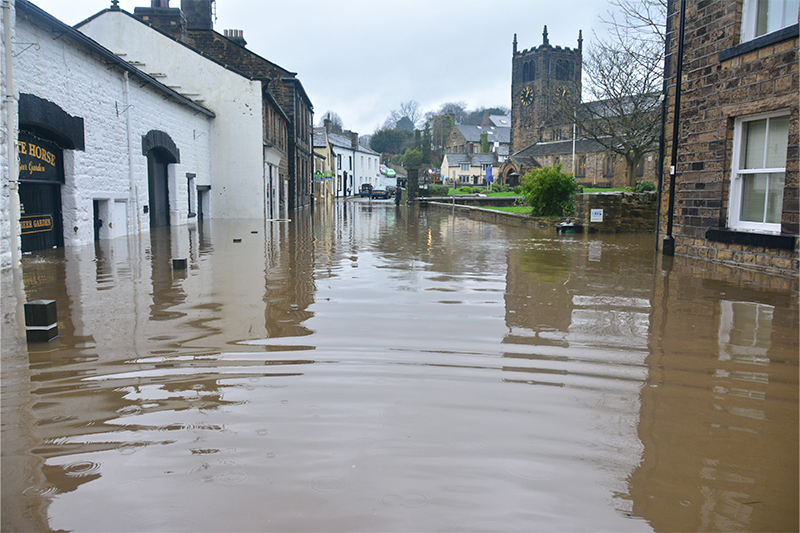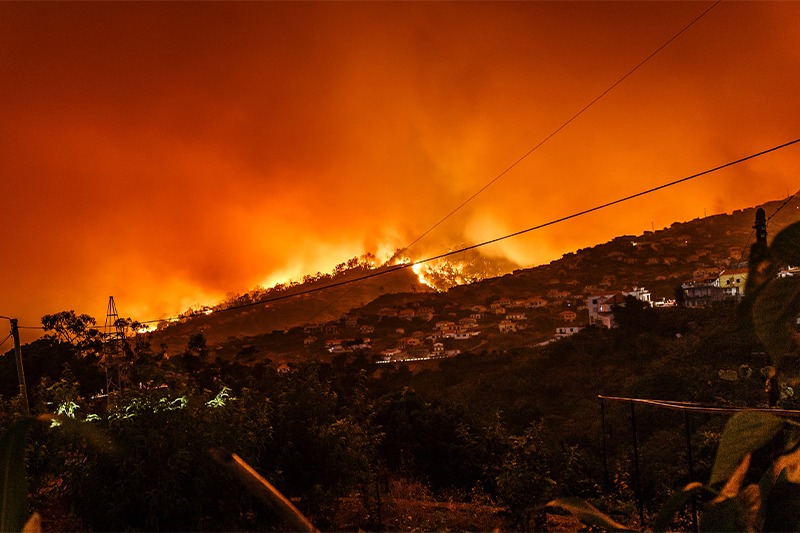
Looking Ahead Is Looking Behind, Too
Next year’s natural disasters are something we would all like to predict. Sadly, we cannot predict specific events. The best we can do is rely on weather experts and real-time data. Forecasting natural disasters is a complex task that involves various factors and uncertainties. For up-to-date and accurate information about potential natural disasters, it’s essential to consider official sources such as meteorological agencies, disaster management organizations, and relevant scientific institutions.
However, we can learn from past events and consider the trends for the year ahead. In the US, the Federal Emergency Management Agency (FEMA) provides tools like Risk Mapping, Assessment, and Planning (Risk MAP) to help mitigate negative impacts. They recently launched the National Risk Index map. The National Risk Index is a dataset and online tool to help illustrate the United States communities most at risk for 18 natural hazards (-FEMA). So, although we don’t have a crystal ball, these tools and others can predict the likelihood and potential impact severity.

Globally, the situation is getting worse
When I shared my Thoughts On NOAA Billion-Dollar Weather And Climate Disasters, I noted that for most businesses, impacts from these events continue to be the highest risk. Even if your employees or customers are fortunate to be relatively unscathed by recent natural disasters, most companies’ bottom line is affected. Estimating the precise impact of natural disasters on company profits each year is complex due to the diverse range of industries and regions affected.
However, natural disasters have a significant financial impact on businesses worldwide. These disasters can cause physical damage to infrastructure and production facilities, leading to production disruptions, supply chain interruptions, and increased costs. Business interruptions, lost sales, and reduced consumer demand further contribute to the adverse effects on company profits. While it is challenging to provide an exact figure, the economic losses from natural disasters can amount to billions of dollars annually, affecting industries across the board. The impact varies depending on the severity and frequency of disasters and the resilience and preparedness measure businesses and governments implement.

Bottom Line Impacts Over the Next 12 Months
Predicting the exact impact of natural disasters on company profits over the next year is uncertain. It depends on various factors such as the frequency and severity of disasters, industry resilience, and preparedness measures. However, considering the historical trends and potential risks, there are several ways natural disasters could affect company profits in the near future.
Firstly, the increasing frequency and intensity of natural disasters, such as hurricanes, wildfires, and floods, could lead to more physical damage and disruptions to business operations. Companies in vulnerable regions may face higher costs for rebuilding and repairs and more extended periods of production downtime, impacting their profitability. Additionally, supply chain disruptions may become more common, affecting the availability of raw materials and the delivery of finished products. This can lead to delays, increased costs, and reduced sales, ultimately impacting company profits.
Secondly, as awareness of climate instability and environmental risks grows, there is an increasing emphasis on sustainable practices and resilience in business operations. Companies that fail to adapt to these changing expectations may face reputational risks and potential loss of customers. Investors and stakeholders are also paying more attention to businesses’ environmental and social impact, which means companies that are more vulnerable to natural disasters may face challenges in attracting investment and maintaining profitability.
Overall, the impact of natural disasters on company profits over the next year will depend on the specific events, the preparedness measures in place, and the resilience of businesses to adapt to changing environmental and market conditions. Companies must assess and mitigate these risks through disaster planning, insurance coverage, diversified supply chains, and sustainability initiatives to minimize the potential adverse effects on their profitability.

Summer in the Northern Hemisphere
In January, I shared my Disaster Forecast For 2023 and concerns about how an extreme winter might impact Europe. The ongoing conflict in Ukraine and economic instability could continue to be a threat into 2024. Looking at this summer, we see some indication that El Nino will be a factor from June through August. According to The Weather Channel’s Summer Temperature Outlook, we may see higher temperatures in the lower 48. However, the temps will be highest in the country’s northern half but not as hot as the previous summer.
Of course, it’s summer in the Northern Hemisphere. But, according to the World Meteorological Organization (WMO), the last eight years will be the eighth hottest. None of us can know what this information will ultimately mean. But, from a resilience perspective, it makes sense to continue to be vigilant and plan for the worst. NOAA publishes a Global Climate Report, and the latest available data from April 2023 predicts above-average temperatures worldwide. Heatwaves could impact portions of the globe, and that’s something to keep an eye out for. Heatwaves can severely impact human health, including heat-related illnesses such as heat exhaustion and heatstroke, worsening existing health conditions and increasing mortality rates.

Common Types of Disasters Worldwide
However, I can provide information about common types of natural disasters worldwide t are most likely to impact businesses. These include:
Hurricanes and Typhoons: These powerful tropical cyclones can bring strong winds, heavy rainfall, storm surges, and flooding to coastal regions.
Earthquakes occur due to the sudden release of energy in the Earth’s crust, resulting in shaking and potential damage to infrastructure.
Floods: Floods can be caused by heavy rainfall, snowmelt, dam failures, or coastal storms, leading to water overflow onto land areas.
Wildfires: These are often caused by dry conditions, heat, and human activities. They can spread rapidly, leading to the destruction of vegetation, homes, and wildlife habitats.
Tornadoes: These violent rotating columns of air can cause significant damage in a localized area, primarily in regions prone to severe thunderstorms.
Volcanic eruptions: Volcanic eruptions can release lava, ash, toxic gases, and pyroclastic flows, posing risks to nearby communities and air quality.
Landslides: Landslides occur when large amounts of rock, soil, or debris move downhill, often due to heavy rainfall, earthquakes, or human activities.
Remember, the occurrence and severity of these events depend on numerous factors, including regional climate patterns, geological characteristics, and human influences. Stay informed and follow the guidance provided by local authorities and experts to ensure your safety in the face of natural disasters.

What We Can Do As Resilience Professionals
I will continue to watch the natural disaster trends and report if I learn anything significant. Disaster Empire is a forum for sharing, so I encourage you to provide your best sources in the comment section below. We all benefit from increasing our knowledge and data. However, the news is not all bad. Our World in Data shared that Emissions of ozone-depleting gases fell by 98%.
Mitigating natural disaster events involves a combination of proactive measures, including investing in resilient infrastructure, implementing early warning systems, improving disaster preparedness and response mechanisms, and promoting sustainable practices to address the underlying factors contributing to climate and environmental degradation. Collaborative efforts among governments, communities, and businesses are crucial to develop comprehensive disaster management strategies that focus on prevention, preparedness, and resilience to reduce the impacts of natural disasters. As Resilience Professionals, we can be part of the solution by tracking risk and understanding how to mitigate business impacts.
Did You Know?
Disaster Empire blogs contain embedded links to source materials, articles of interest, videos, books, and training I recommend. Just click on the blue embedded link to access the resource.
